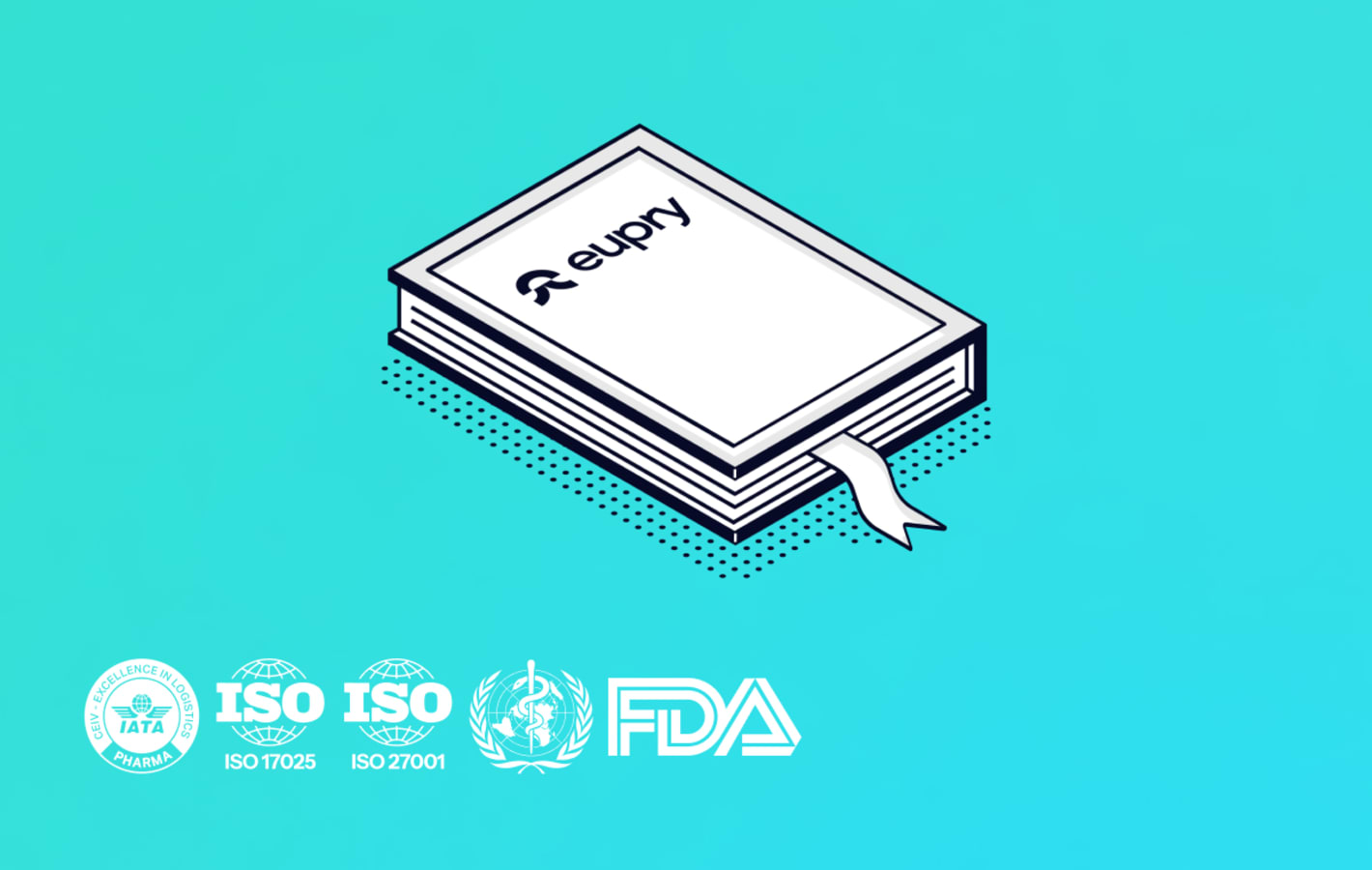IQ, OQ, PQ for warehouses

Adam Hartmann-Kruckow
How to qualify pharma GMP and GDP storage environments
Understand how to plan and execute IQ, OQ, and PQ for phar,a storage environments – from zoning and sensor density to seasonal studies and dock doors – so you can confidently prove control and pass inspections.
Get templates aligned with EU GMP Annex 15 expectations and FDA terminology to speed up planning, execution, and documentation.

Note
This warehouse qualification guide is for educational purposes only and does not replace official regulations or professional judgment. Users are responsible for ensuring that IQ, OQ, and PQ activities for warehouses are carried out in accordance with EU GMP Annex 15, FDA 21 CFR Part 211, GDP, and other relevant GxP standards. The protocol templates provided are examples and must be adapted, reviewed, and approved within your company’s quality management system before use.
Warehouses in the pharmaceutical supply chain must demonstrate that temperature-sensitive products remain within defined limits during storage and handling. Regulators expect evidence – via IQ, OQ, and PQ – that the facility is installed as designed, operates as intended, and performs under real-world conditions. This page aligns with EU GMP Annex 15 (qualification), GDP expectations for distribution, and data integrity controls for electronic records.
What are IQ, OQ, and PQ for pharma warehouses?
IQ (installation qualification), OQ (operational qualification), and PQ (performance qualification) are the core stages of equipment and facility qualification. In warehouses, they prove that the building systems, controls, and procedures keep products within specification across zones, seasons, and typical operations.
Also read: IQ, OQ, PQ in pharmaceuticals guidelines
Why are IQ, OQ, and PQ required for warehouses?
Warehouse environments face larger volumes, mixed product flows, and exposure at docks that can challenge uniformity. Qualification provides documented assurance that temperature control is robust – not only at steady state, but during operations that matter, like pallet moves and door cycles.
- GDP focus: Distribution environments must protect product quality during storage and handling.
- Annex 15 link: Qualification must be risk-based with traceability from URS to executed tests.
- WHO alignment: Mapping plans should reflect volume, infiltration points, and sensor strategy in large spaces.
Also read: How to write a URS for pharmaceutical storage areas and TCUs
How to plan IQ, OQ, PQ for warehouses
A clear plan avoids false failures and rework. For warehouses, emphasize zoning, seasonal variation, infiltration risks, and realistic operations. Learn more in our temperature mapping guide.
- URS and zoning: Define ranges per zone (bulk storage, staging, quarantine) and include dock areas if in scope.
- Risk assessment: Identify failure modes – dock door openings, HVAC outages, racking hot spots, solar gain.
- Acceptance criteria: Set measurable limits for uniformity, recovery, and alarms tied to product requirements.
- Probe density and grid: Justify sensor count and grid based on volume and risk; document worst-case placements.
- Seasonal strategy: Plan studies during hot and cold extremes; define when a single season is acceptable.
- Data integrity: Define audit trail, access control, and time sync for monitoring and mapping systems.
Also read: How to create a mapping protocol

Download your free IQ/OQ/PQ protocol pack for warhouses
Get instant access to an all-in-one protocol pack: From URS checklists to IQ, OQ, and PQ protocol templates. All you need to plan the qualification of temperature-controlled equipment and environments in pharmaceuticals, biotech, and logistics, aligned with WHO, FDA, GMP/GDP/GxP guidelines.
How to perform installation qualification (IQ) for warehouses
IQ confirms the facility and critical utilities match the design and are ready for qualification.
- Design documentation: Verify as-built drawings, HVAC schematics, airflow design, and insulation details.
- Utilities and environment: Confirm power, HVAC capacity, ambient design conditions, and building envelope integrity.
- Equipment identification: Record AHUs, sensors, controllers, and software versions; capture locations.
- Calibration evidence: Verify traceable calibration for reference instruments and fixed probes.
- Configuration baseline: Record alarm setpoints, user roles, and network topology; establish change control.
Acceptance criteria: Installation conforms to approved design, URS, and safety requirements.
Also read: Continuous temperature mapping
How to perform operational qualification (OQ) for warehouses
OQ challenges the controls and alarms against defined tests – including scenarios that stress the warehouse.
- Functional checks: Verify HVAC control response, BMS/EMS interfaces, and sensor plausibility checks.
- Alarm challenges: Simulate high/low temperature excursions and notification flows; document response times.
- Door cycle tests: Perform controlled dock door openings to assess infiltration and recovery behavior.
- Stress mapping: Run mapping with low load or defined test loads to reveal patterns and worst-case locations.
- Power interruption: Confirm safe restart and data continuity; verify alarm after power restoration.
- Data integrity checks: Confirm time synchronization, audit trail, access controls, and complete data export.
Acceptance criteria: Alarms behave as specified, recovery meets limits, and mapping shows control and uniformity by zone.
Also read: Smarter temperature monitoring for GMP and GDP compliance
How to perform performance qualification (PQ) for warehouses
PQ demonstrates that the warehouse maintains specifications under routine operations with representative loads, flows, and staffing.
- Mapping under representative load: Map with typical pallet patterns and racking configurations; justify worst-case points.
- Operational patterns: Include peak activity windows, door cycles, and material flows in the test window.
- Seasonal confirmation: Verify control at climatic extremes when required by risk assessment.
- Process capability: Use monitoring data to confirm excursions are rare, short, and managed via SOPs.
- Documentation and sign-off: Compile mapping reports, calibration certs, and deviations into a clear PQ report.
Acceptance criteria: Zones remain within defined ranges; alarms and responses work consistently in daily use.
Also read: Virtual temperature mapping in GxP
What documentation do auditors check during warehouse qualification?
Auditors want proof of control across zones and seasons – not only a single mapping report. Strong documentation ties your URS and risk assessment to executed tests and live monitoring.
- Traceability matrix: Links URS items and risks to IQ/OQ/PQ tests and acceptance criteria.
- Mapping reports: Include grid design, probe IDs, placement diagrams, seasonal notes, and raw data.
- Calibration records: Provide traceable certs for reference instruments and fixed sensors.
- Deviations and CAPA: Show impact assessment, root cause, and effective corrective actions.
- Change control: Record repairs, relocations, software updates, and requalification triggers.
Also read: GxP glossary
How to reduce requalification workload for warehouses
Large sites can get stuck in a cycle of re-mapping. A risk-based, data-driven approach minimizes disruption and keeps you compliant.
- Continuous mapping: Align monitoring and mapping sensors and IDs so operational data supports qualification claims.
- Virtual mapping options: Use CFD-based virtual mapping to accelerate commissioning and optimize probe strategies where appropriate.
- Risk-based triggers: Re-qualify after significant changes, repeated deviations, or negative trend analysis – not on an arbitrary calendar.
- Central oversight: Use dashboards to compare zones and sites; spot trends early and act.
- Standardized templates: Reuse protocols across locations to speed approvals and execution.
Also read: Continuous temperature mapping – solution
Download free IQ/OQ/PQ protocol template pack
Get a step-by-step set of protocol templates and checklists to plan and document IQ, OQ, and PQ for warehouses and other temperature-controlled environments, aligned with common auditor expectations in GMP and GDP.

FAQ about IQ, OQ, PQ for pharma warehouses
IQ, OQ, and PQ services for GMP and GDP
One-stop for your entire validation process
(and all other thermal compliance needs) Get your warehouse validations done faster with Eupry’s temperature qualification services built for GMP and GDP.
- One provider for the full validation
- Cost- and time-optimized processes
- Full GxP compliance confidence
Also read: Our continuous mapping solution

